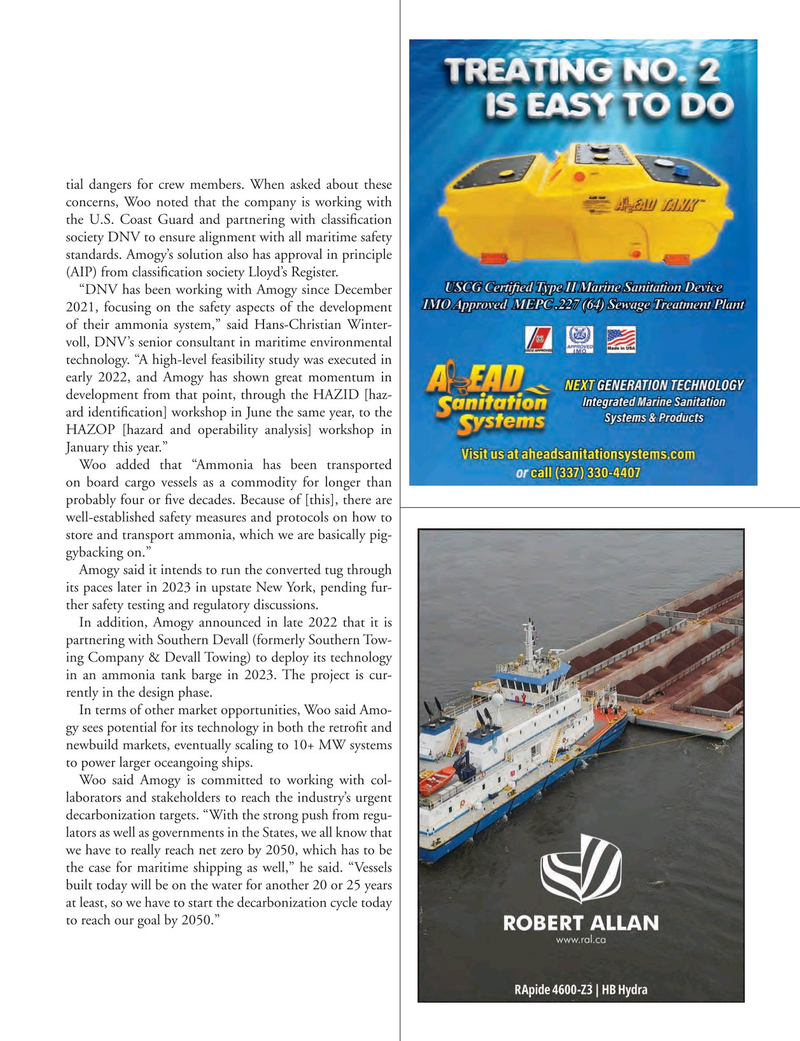
Page 29: of Marine News Magazine (April 2023)
Towboats, Tugs & Barges
Read this page in Pdf, Flash or Html5 edition of April 2023 Marine News Magazine
tial dangers for crew members. When asked about these concerns, Woo noted that the company is working with the U.S. Coast Guard and partnering with classi? cation society DNV to ensure alignment with all maritime safety standards. Amogy’s solution also has approval in principle (AIP) from classi? cation society Lloyd’s Register.
“DNV has been working with Amogy since December 2021, focusing on the safety aspects of the development of their ammonia system,” said Hans-Christian Winter- voll, DNV’s senior consultant in maritime environmental technology. “A high-level feasibility study was executed in early 2022, and Amogy has shown great momentum in development from that point, through the HAZID [haz- ard identi? cation] workshop in June the same year, to the
HAZOP [hazard and operability analysis] workshop in
January this year.”
Woo added that “Ammonia has been transported on board cargo vessels as a commodity for longer than probably four or ? ve decades. Because of [this], there are well-established safety measures and protocols on how to store and transport ammonia, which we are basically pig- gybacking on.”
Amogy said it intends to run the converted tug through its paces later in 2023 in upstate New York, pending fur- ther safety testing and regulatory discussions.
In addition, Amogy announced in late 2022 that it is partnering with Southern Devall (formerly Southern Tow- ing Company & Devall Towing) to deploy its technology in an ammonia tank barge in 2023. The project is cur- rently in the design phase.
In terms of other market opportunities, Woo said Amo- gy sees potential for its technology in both the retro? t and newbuild markets, eventually scaling to 10+ MW systems to power larger oceangoing ships.
Woo said Amogy is committed to working with col- laborators and stakeholders to reach the industry’s urgent decarbonization targets. “With the strong push from regu- lators as well as governments in the States, we all know that we have to really reach net zero by 2050, which has to be the case for maritime shipping as well,” he said. “Vessels built today will be on the water for another 20 or 25 years at least, so we have to start the decarbonization cycle today to reach our goal by 2050.”

 28
28

 30
30
